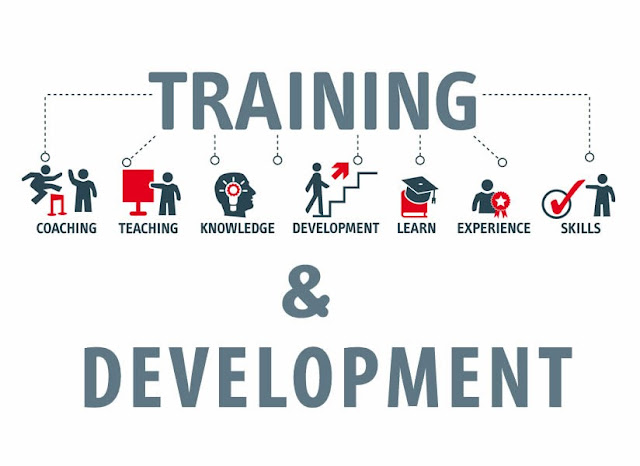Strategic Stress Management: Empowering Employees and Enhancing Performance in HRM
STRESS MANAGEMANT STRATAGIES
- Promote Work-Life Balance: Encourage employees to maintain a healthy balance between work and personal life. Offer flexible work arrangements, such as telecommuting or flexible hours, to help employees manage their responsibilities outside of work.
- Set Realistic Expectations: Ensure that
job roles and responsibilities are clearly defined and achievable. Avoid
overloading employees with excessive workloads or unrealistic deadlines, which
can contribute to stress.
- Provide Training and Support: Offer training
programs to help employees develop skills in time management, prioritization,
and stress management techniques. Provide resources and support for employees
to cope with work-related challenges effectively.
- Encourage Open Communication: Foster a
culture of open communication where employees feel comfortable expressing their
concerns, seeking help, and providing feedback. Regular check-ins with managers
can help identify and address sources of stress early.
- Offer Wellness Programs: Implement wellness initiatives that focus on physical, mental, and emotional well-being. This may include fitness programs, mindfulness sessions, stress reduction workshops, and access to counseling services.
- Recognize and Reward Achievements: Acknowledge and reward employees for their hard work and achievements. Recognition boosts morale and motivation, reducing the risk of burnout and stress.
- Encourage Breaks and Time Off: Encourage employees to take regular breaks throughout the day to recharge and relax. Encourage the use of vacation time and discourage a culture of presenteeism, where employees feel pressured to work even when they need time off.
- Address Organizational Issues: Identify and address organizational factors that contribute to stress, such as poor communication, lack of resources, or ineffective leadership. Work to create a supportive and inclusive work environment where employees feel valued and respected.
- Lead by Example: Managers and leaders should model healthy behaviors and demonstrate the importance of work-life balance and stress management. Encourage self-care and prioritize employee well-being at all levels of the organization.
Stress management is a vital process aimed at
identifying, mitigating, and coping with stress in individuals and
organizations. By implementing effective strategies and fostering a supportive
environment, stress management promotes employee well-being, enhances
productivity, and contributes to a positive workplace culture. It is an
essential component of human resource management, ensuring that employees can
thrive, remain engaged, and achieve their full potential.
H. H. (2023). Stress management/HARWARD HEALTH SCHOOL.(online)
https://www.health.harvard.edu/mind-and-mood/stress-management-enhance-your-well-being-by-reducing-stress-and-building-resilience#excerpt
university, c. (2024). work stress, CSP.EDU.
https://online.csp.edu/resources/article/work-stress/
UNWIN J.(2023). Resilience for HR
Professionals.HR EXCHANGE NETWORD:
https://www.hrexchangenetwork.com/mental-health-and-wellness/columns/resilience-for-hr-professionals-building-personal-and-organizational-stress-management-skill
H. H. (2023). Stress management/HARWARD HEALTH SCHOOL.(online)
https://www.health.harvard.edu/mind-and-mood/stress-management-enhance-your-well-being-by-reducing-stress-and-building-resilience#excerpt
university, c. (2024). work stress, CSP.EDU.
https://online.csp.edu/resources/article/work-stress/
UNWIN J.(2023). Resilience for HR
Professionals.HR EXCHANGE NETWORD:
https://www.hrexchangenetwork.com/mental-health-and-wellness/columns/resilience-for-hr-professionals-building-personal-and-organizational-stress-management-skill





Nicely explained article
ReplyDeletepls add the references in Harvard styled with accessed date, online etc….
Thanks you valuable comment and suggestions
ReplyDeleteYou have done this article very well by explaining about stress management and the causes of work stress and providing strategic solutions.. It is a worthwhile post for us. good work
ReplyDeleteThis blog about Strategic Stress Management offers strategies for enhancing HRM effectiveness and employee empowerment, focusing on stress sources, mitigation solutions, work-life balance, open communication, wellness programs, recognition, breaks, organizational issues, and setting an example with a vedio.Good job.
ReplyDeleteEffective stress management involves identifying stressors, implementing coping strategies such as mindfulness, exercise, and time management, seeking social support, and maintaining a healthy work-life balance.
ReplyDeleteStrategic stress management in HRM empowers employees, promoting well-being and productivity. Implementing support systems, flexible policies, and mindfulness programs fosters resilience, driving performance and organizational success in today's demanding work environment.
ReplyDeleteIn conclusion, this blog post serves as a valuable resource for HR professionals navigating the complexities of stress management in the workplace.
ReplyDelete